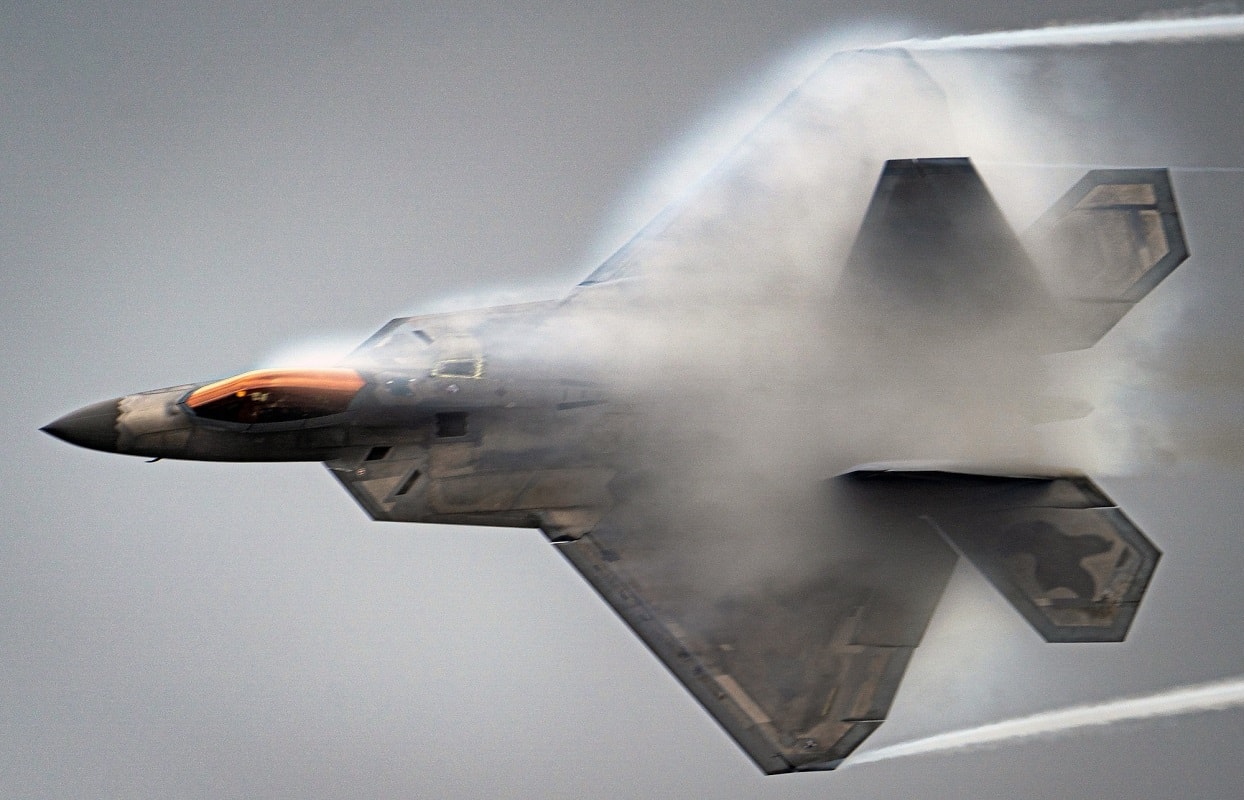Red Flag-Alaska, one of the most significant aerial warfare exercises in the U.S. Air Force’s calendar, begins today.
Dozens of aircraft, including F-22 Raptor and F-35A Lighting II stealth fighter jets, are scheduled to fly from June 9 to June 24 over the Joint Pacific Alaska Range Complex.
Red Flag-Alaska, Explained
According to the Air Force, during Red Flag-Alaska 22-2, about 1,600 troops are expected to fly, maintain, and support more than 70 fighters, bombers, transport, and support aircraft from 22 different units. Joining the U.S. units will be troops and aircraft from the Republic of Singapore Air Force.
In previous iterations of the Red Flag-Alaska exercise, the following aircraft participated:
– E-3 Sentry
– E-7A Wedgetail
– EA-18G Growler
– EC-130 Compass
– F-15E Strike Eagle
– F-16C Fighting Falcon
– FGR4 Tornado
– HC-130 Combat King
– KC-135 Stratotanker
– MH-60 Blackhawk
– MQ-9 Reaper
– RC-135 Rivet Joint
– RQ-4 Global Hawk
“Red Flag-Alaska 22-2, a Pacific Air Forces-sponsored exercise, is scheduled to run from 9 June to 24 June with primary flight operations over the Joint Pacific Alaska Range Complex. Red Flag-Alaska is designed to provide realistic training essential to the success of air and space operations in a simulated combat environment,” the Air Forces Pacific said in a press release.
In addition to testing and validating capabilities, Red Flag-Alaska 22-2 aims to facilitate the exchange of tactics, techniques, and procedures (TTPs) between the U.S. and Singaporean air forces.
Most of the sorties will take place from Eielson Air Force Base and Joint Base Elmendorf-Richardson, Alaska.
“Red Flag 22-2 gives us a chance to strengthen our partnership capacity, in addition to further developing relations with our allies and sister services. In a growing number of potential conflicts, we’re going to need to rely on our security partners, so integration is not only key to ensuring air dominance, but great real-world experience for all Red Flag personnel,” Lieutenant Colonel Breacher ‘Magnus’ Webb, the commanding officer of the 389th Fighter Squadron, had said recently.
Red Flag-Alaska, Part of the Many Faces of Red Flag
There are three different versions (or, better, one main event with two sub-exercises) of the Red Flag exercise. Exercise Red Flag, the flagship event, takes place at Nellis Air Force Base, near Las Vegas, Nevada, and involves more than 30 NATO allies and partners and aircraft from across the U.S. military, including the Air Force, Navy, and Marine Corps.
Red Flag-Alaska and Red Flag-Rescue are the “sub-exercises” that focus more on particular mission sets and run throughout the year with different aircraft, objectives, and coalition forces with the ultimate goal to ensure a better, more diverse, and lethal force.
Red Flag-Alaska dates back to 1975, though, at the time, it was known as Exercise Cope Thunder and took place at Clark Air Base in the Philippines.
1945’s New Defense and National Security Columnist, Stavros Atlamazoglou is a seasoned defense journalist specializing in special operations, a Hellenic Army veteran (national service with the 575th Marine Battalion and Army HQ), and a Johns Hopkins University graduate. His work has been featured in Business Insider, Sandboxx, and SOFREP.

